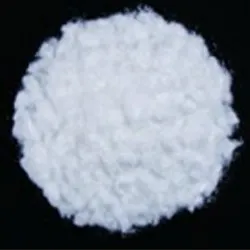
butyl rubber
The Versatility of Butyl Rubber A Comprehensive Overview
Butyl rubber, a type of synthetic rubber, is renowned for its unique properties and versatility in a multitude of applications. Developed in the 1940s, it has since become an essential material in various industries, from automotive to construction. Butyl rubber is primarily composed of isobutylene with a small amount of isoprene, which grants it a distinct set of characteristics that differ from those of natural rubber and other synthetic rubbers.
Properties of Butyl Rubber
One of the standout features of butyl rubber is its excellent impermeability to gases. This property makes it particularly effective in applications requiring airtight seals, such as inner tubes for tires and inflatable products. Unlike natural rubber, which can allow gases to pass through, butyl rubber retains air effectively, leading to longer-lasting products. Additionally, its resistance to aging, ozone, and UV light ensures durability and performance, particularly in outdoor applications.
Another significant property of butyl rubber is its low-temperature flexibility. It maintains its elasticity even in cold weather, making it ideal for seals and gaskets in environments where temperature fluctuations occur. This resilience under diverse temperature conditions adds to its appeal in various engineering applications.
Applications of Butyl Rubber
Butyl rubber finds its applications in several sectors, highlighting its versatility. In the automotive industry, it is extensively used for tire manufacturing. Almost all tubeless tires incorporate a layer of butyl rubber to enhance air retention and extend tire life. The automotive sector also utilizes butyl rubber in various sealing applications and vibration-damping components due to its excellent acoustic properties.
butyl rubber

In the construction industry, butyl rubber is favored for waterproofing membranes, roofing, and sealants. Its ability to form a tight seal prevents water infiltration, which is crucial for maintaining structural integrity and enhancing the lifespan of buildings. Moreover, butyl rubber's resistance to chemicals makes it suitable for various industrial applications, including chemical storage and transportation.
Another notable application of butyl rubber is in the medical field, where it is used for medical devices and seals for pharmaceutical containers. Its biocompatibility and inert nature make it a safe choice for products that come into contact with humans or sensitive materials.
Environmental Considerations and Innovations
As awareness of environmental issues grows, the production and disposal of synthetic materials like butyl rubber have come under scrutiny. However, recent innovations have emerged to address these concerns. Manufacturers are exploring more sustainable methods of production and the potential for recycling butyl rubber. Efforts are also being made to develop bio-based alternatives that retain the desirable properties of traditional butyl rubber while reducing environmental impact.
The ongoing research in the field of elastomers is paving the way for advancements that could make butyl rubber even more versatile and environmentally friendly. Such innovations may include the development of modified butyl rubber with enhanced characteristics or composites that incorporate natural materials.
Conclusion
In summary, butyl rubber stands out as a remarkable material with a diverse range of properties that make it indispensable across various industries. Its excellent gas impermeability, low-temperature flexibility, and resistance to environmental factors contribute to its widespread applications in automotive, construction, and medical fields. As the industry continues to evolve, the potential for more sustainable practices and innovations offers exciting prospects for the future of butyl rubber. With its significant role in modern technology and engineering, butyl rubber is sure to remain a critical component in meeting the demands of contemporary society.
-
Pure Sodium Dichloroisocyanurate Dihydrate | Powerful DisinfectantNewsAug.29,2025
-
Industrial Chemicals: Quality & Purity for Every IndustryNewsAug.28,2025
-
Nitrile Rubber Honoring Strict Production StandardsNewsAug.22,2025
-
Aspartame Ingredients Honoring Food Safety ValuesNewsAug.22,2025
-
Fertilizer for Balanced Plant NutritionNewsAug.22,2025
-
Cyanide Gold Processing with High Purity AdditivesNewsAug.22,2025
-
Formic Acid in Textile Dyeing ApplicationsNewsAug.22,2025
Hebei Tenger Chemical Technology Co., Ltd. focuses on the chemical industry and is committed to the export service of chemical raw materials.
-

view more DiethanolisopropanolamineIn the ever-growing field of chemical solutions, diethanolisopropanolamine (DEIPA) stands out as a versatile and important compound. Due to its unique chemical structure and properties, DEIPA is of interest to various industries including construction, personal care, and agriculture. -

view more TriisopropanolamineTriisopropanolamine (TIPA) alkanol amine substance, is a kind of alcohol amine compound with amino and alcohol hydroxyl, and because of its molecules contains both amino and hydroxyl. -

view more Tetramethyl Thiuram DisulfideTetramethyl thiuram disulfide, also known as TMTD, is a white to light-yellow powder with a distinct sulfur-like odor. It is soluble in organic solvents such as benzene, acetone, and ethyl acetate, making it highly versatile for use in different formulations. TMTD is known for its excellent vulcanization acceleration properties, which makes it a key ingredient in the production of rubber products. Additionally, it acts as an effective fungicide and bactericide, making it valuable in agricultural applications. Its high purity and stability ensure consistent performance, making it a preferred choice for manufacturers across various industries.





